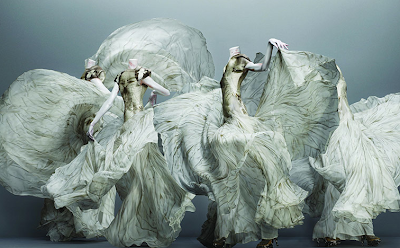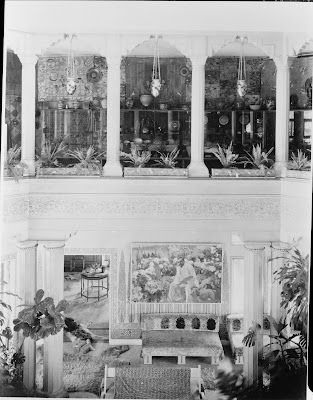
Dress from the fall/winter 2010 collection. Photo: Solve Sundsbo/The Metropolitan Museum of Art
Detail
Alexander McQueen: Savage Beauty will run at The Metropolitan Museum of Art's Costume Institute from 4 May-31 July 2011. A preview was held in London today at the Ritz Hotel to coincide with London fashion week. Anna Wintour and Samantha Cameron were in attendance for the preview and press conference.

Ritz Preview. Photo: Yui Mok/Press Association, via Associated Press
The retrospective at the Met will include some 100 works covering the designer's astounding 19 year career. The catalogue is available on pre-order but will not be released until 31 May 2011. I leave you with these juicy and haunting images from the publication and a BBC interview with Anna Wintour.
Gown, Widows of Culloden. Photo: Solve Sundsbo/The Metropolitan Museum of Art
Detail
Gown from the Voss Collection. Photo: Solve Sundsbo/The Metropolitan Museum of Art
Detail
Ensemble, Its a Jungle Out There. Photo: Solve Sundsbo/The Metropolitan Museum of Art
Dress, Horn of Plenty. Photo: Solve Sundsbo/The Metropolitan Museum of Art
Detail
Ensemble, Plato's Atlantis. Photo: Solve Sundsbo/The Metropolitan Museum of Art
Detail
Ensemble from the Voss Collection. Photo: Solve Sundsbo/The Metropolitan Museum of Art
Detail
Detail

































